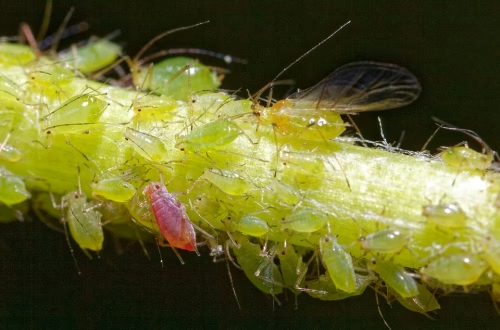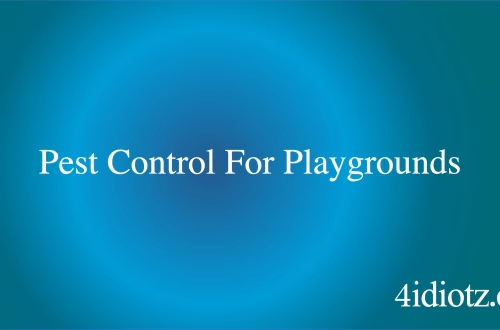Summary:
Ant infestations can be a nuisance for homeowners and businesses alike, leading to structural damage, contamination, and health risks. Effective ant control methods are essential for managing these pests and ensuring a safe, clean environment. This article explores various strategies for ant control, from DIY solutions to professional pest management services. By understanding the types of ants, common control methods, and the risks of untreated infestations, readers can take proactive steps to protect their properties. Whether you’re dealing with carpenter ants, sugar ants, or fire ants, this guide provides actionable advice to address the issue effectively.
What This Means for You:
- Early detection and intervention can prevent extensive damage and costly repairs.
- Combining preventative measures with targeted treatments offers long-term control.
- Professional pest control services ensure safe and effective elimination of ants.
- Ignoring ant infestations can lead to health risks and structural damage, emphasizing the need for timely action.
Ant Control Methods Explained:
”Ant Control Methods” Explained: Ant control methods refer to the strategies and techniques used to manage and eliminate ant infestations in residential, commercial, and agricultural settings. These methods range from preventative measures, such as sealing entry points and maintaining cleanliness, to direct treatments like baits, sprays, and insecticides. Effective ant control also involves identifying the specific ant species, as different types require tailored approaches. For instance, carpenter ants require different treatment strategies than sugar ants or fire ants. By combining preventative practices with targeted treatments, homeowners and businesses can achieve long-term control and prevent future infestations.
Understanding the biology and behavior of ants is crucial for effective control. Ants are social insects that live in colonies, often making their nests in hard-to-reach areas. They are attracted to food sources, particularly sugary and protein-rich items, which is why maintaining a clean environment is essential. Additionally, ants release pheromones to communicate and mark trails, allowing them to locate food sources efficiently. Disrupting these trails and eliminating the colony are key components of successful ant control.
Types of Pest Issues:
Ant infestations can vary depending on the species and the environment. Common types of ants include carpenter ants, which tunnel through wood and can cause structural damage; sugar ants, which invade kitchens in search of sweets; and fire ants, known for their painful stings and aggressive behavior. Each species poses unique challenges and requires specific control methods.
State and federal laws may also impact ant control efforts. For example, some insecticides are regulated to protect public health and the environment. Additionally, certain ant species, like the invasive red imported fire ant, are subject to quarantine regulations to prevent their spread. Understanding these legal considerations is essential for compliance and effective pest management.
Common Pest Control Methods:
Effective ant control methods include both DIY solutions and professional treatments. For minor infestations, homeowners can use bait stations, sprays, or natural remedies like diatomaceous earth or vinegar solutions. Baits are particularly effective as they allow ants to carry the poison back to their colony, eliminating the entire nest. However, for severe or persistent infestations, professional pest control services are recommended.
Professionals use advanced techniques, such as perimeter treatments, nest injections, and integrated pest management (IPM) strategies. IPM combines preventative measures, monitoring, and targeted treatments to minimize environmental impact and ensure long-term control. Choosing the right method depends on the ant species, the severity of the infestation, and the specific needs of the property.
Risks and Consequences:
Ignoring ant infestations can lead to significant risks and consequences. Carpenter ants, for example, can weaken wooden structures, compromising the safety of a building. Fire ants pose health risks through their painful stings, which can cause allergic reactions in some individuals. Additionally, ants can contaminate food and surfaces, leading to hygiene and health concerns.
The costs of untreated infestations can be substantial, including repairs, medical expenses, and decreased property value. Early intervention is critical to prevent these risks and protect your home or business. By addressing ant infestations promptly and effectively, you can avoid costly consequences and ensure a safe, pest-free environment.
Choosing a Pest Control Service:
Selecting the right pest control service is essential for effective ant management. Look for licensed and experienced professionals who specialize in ant control. A reputable service will conduct a thorough inspection, identify the ant species, and tailor their treatment plan to your specific needs. Additionally, inquire about their use of eco-friendly and safe methods, particularly if you have children or pets.
Customer reviews and recommendations can also help you choose a reliable provider. Finally, ask about guarantees or follow-up services to ensure long-term success. By partnering with a qualified pest control expert, you can achieve effective and lasting ant control.
People Also Ask About:
- How do I identify the type of ants in my home? Look for physical characteristics like size, color, and behavior. Carpenter ants are large and black, while sugar ants are small and brown. Professional inspection can provide accurate identification.
- Are DIY ant control methods effective? DIY methods can work for minor infestations but may not eliminate the colony entirely. For severe cases, professional treatment is recommended.
- How can I prevent ants from entering my home? Seal cracks, keep food stored in airtight containers, and maintain cleanliness. Regular inspections and treatments can also deter ants.
- Do ants pose health risks? Yes, ants can contaminate food and surfaces, and some species, like fire ants, can cause painful stings and allergic reactions.
- What is integrated pest management (IPM)? IPM is a holistic approach that combines preventative measures, monitoring, and targeted treatments to manage pests effectively while minimizing environmental impact.
Expert Opinion:
Experts emphasize the importance of early detection and tailored treatment strategies for effective ant control. Regular inspections, combined with preventative measures, can significantly reduce the risk of infestations. Additionally, eco-friendly and safe methods are increasingly recommended to protect both human health and the environment. Choosing a licensed and experienced pest control service ensures professional-grade results and long-term protection.
Related Key Terms:
- Ant control methods for homeowners
- Professional ant extermination services
- DIY ant control solutions
- Carpenter ant treatment strategies
- Fire ant infestation prevention
- Eco-friendly ant control techniques
- Integrated pest management for ants
Pest Control Disclaimer
This content is for educational purposes only and does not replace professional pest inspection, treatment, or safety advice. Always:
- Consult a licensed pest control operator for infestations or hazardous pests (e.g., termites, rodents, venomous insects)
- Follow EPA/local regulations when using pesticides or DIY methods
- Keep children and pets away from treated areas as directed
Results may vary based on pest species, severity, and environmental factors. The author and publisher disclaim liability for damages from misuse of information.
*Featured image sourced by Pixabay.com





